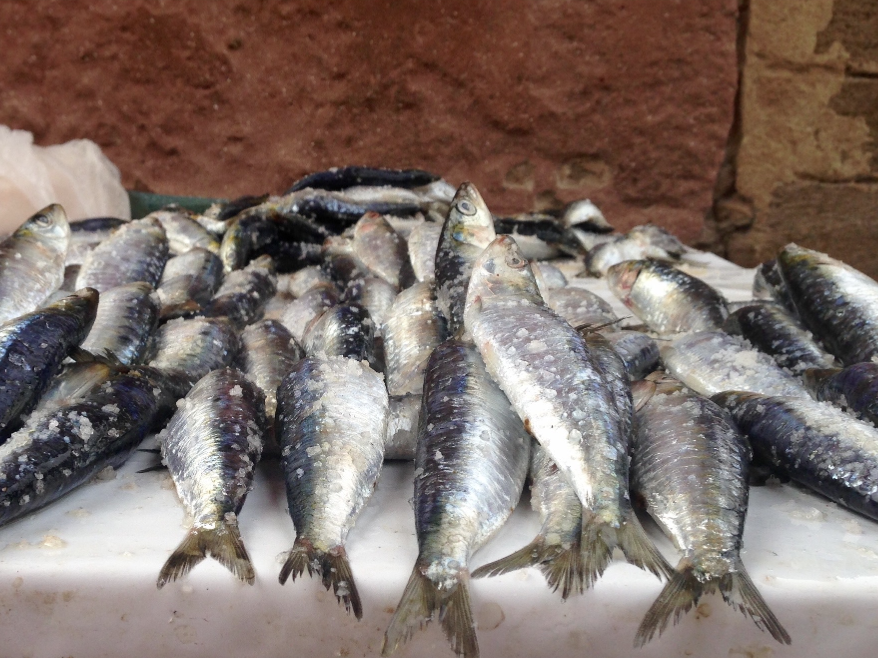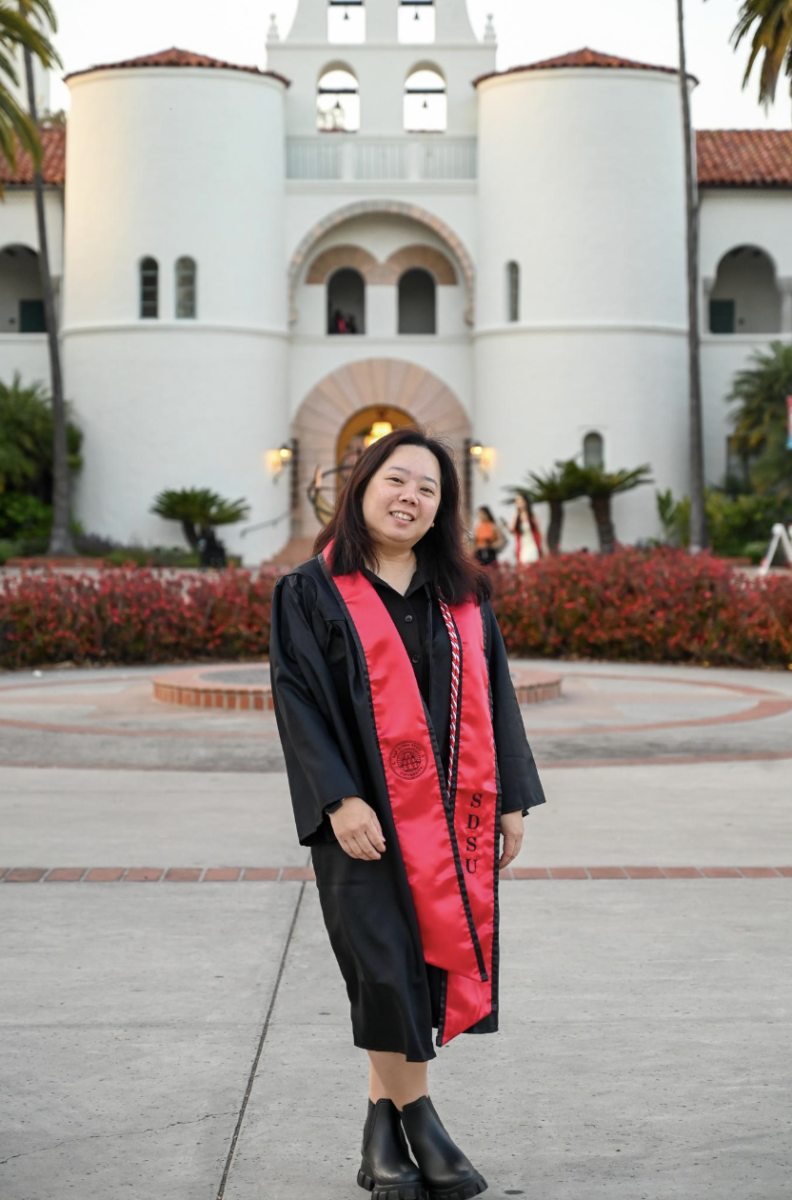A plan is in the works to install America’s largest fish farm off the coast of San Diego.
Rose Canyon Fisheries is teaming with a private investor and Hubbs-SeaWorld Research Institute to build an aquafarm about the size of Balboa Park in federal waters ranging from Pacific Beach to Sunset Cliffs.
The goal is to produce 11 million pounds of yellowtail jack, white seabass and striped bass every year.
Unfortunately, the environmental cons of a huge, industrial aquaculture project far outweigh the pros.
Fourty percent of the seafood humans consume is farmed. Fish farms usually have large numbers of artificially bred fish kept in enclosures in lakes or oceans.
They’re fed fish feed made from smaller fish and are most often cultivated for food.
Fish farms have had immeasurable negative impacts on marine environments around the world, such as water pollution, habitat destruction and species influence.
In the U.S., 91 percent of seafood is imported.
Hubbs-SeaWorld Research Institute President and CEO Don Kent said in an interview with KPBS that cutting import costs is one motive for creating a large-scale fish farm in San Diego.
Most aquaculture and mariculture project websites also cite this reason, along with growing global population generating need for more fish than wildlife can sustain.
“There’s 7 billion people on Earth now and there’s going to be 9 billion people in your lifetime very soon,” Kent said to KPBS. “How are we going to feed those extra 2 billion people?”
But Thomas Malthus, a scholar in the field of demography, thought the world would run out of food by 1890.
When that didn’t happen, Paul Ehrlich, an influential physicist, predicted mass famines would take out one-fifth of the human population by the end of the 1970s.
That didn’t happen, either. Human ingenuity has always overcome these warnings.
Environmentalists have many concerns surrounding the planned Rose Canyon Fisheries project.
High concentrations of fish feces can lead to algae blooms, which is when huge amounts of microscopic algae develop and kill surrounding plants.
A large amount of dead plants means extra bacteria to decompose them. These bacteria use up the dissolved oxygen in water, which then kills off many fish and aquatic insects and can even result in a dead area.
Feces can also change the composition of bottom sediments, negatively effecting and even displacing organisms that live in that habitat.
Speaking of habitat — what happens to the one currently thriving where Rose Canyon Fisheries’ fish farm is supposed to go?
According to Encyclopedia Britannica Advocacy for Animals, “Mangrove forests — complex ecosystems that lined great stretches of the coasts of Thailand, Vietnam and China, as well as those of other countries — have been destroyed to create shrimp and fish farms.
These swamps helped buffer the effects of hurricanes, cyclones and tsunamis.”
The fish farm could also have huge impacts on the surrounding water.
Feces, excess food, antibiotics, algal growth-prohibiting chemicals, cleaning chemicals and cage materials would all pollute the water that many San Diego State students surf, swim and scuba dive in regularly.
According to the website Food and Water Watch, “anti-fouling agents used to keep cages and pens clean are highly toxic. For example, the common anti-fouling agent butyltin (specifically tributyltin) has been linked to reproductive problems in gastropod mollusks and is suspected to cause immune suppression in marine mammals including dolphins, seals and sea otters.”
Another inevitable danger in fish farming is some of the fish will escape their cages. Escaped inbred fish would breed with wild fish and affect the biodiversity of Southern California marine ecosystems. In some cases around the world, carnivorous farmed fish have even replaced wild species.
One thing that can be said for Kent’s plan, though, is that all three of the species he plans to farm are seen in the wild in California (they’re not native to California, but they’re already here).
That doesn’t change the fact that inbred fish would weaken surrounding biodiversity if they escaped.
If escaped fish have diseases, those will spread to the wild populations, as well.
Kent told KPBS his cages are designed so that fish can’t escape, and if they do, they won’t have diseases to spread. It’s not a very strong argument, considering he can’t be sure that no fish will escape due to severe weather, human error or equipment failure, and he certainly can’t guarantee the fish won’t develop diseases.
In case this hasn’t been enough evidence against a fish farm in San Diego, other marine life, such as seals and dolphins, could also get caught in the nets and cables and die. Matt O’Malley, a lawyer with San Diego Coastkeeper, told KPBS he is concerned that a farm of this scale could change whale migration patterns and wild fish behavior.
Fish farms rely on huge numbers of small pelagic fish that are caught from the wild. These wild fish are ground up into fish feed to feed the farmed fish.
Then, the wildlife that depends on those small fish doesn’t have enough to eat, and every subsequent level of the food chain is negatively affected.
In this way, fish farms actually diminish populations of wild fish, when their supposed reason for existence is that there aren’t enough wild fish.
And what about human health?
According to Food and Water Watch, “Studies indicate that farm-raised fish contain higher levels of chemical pollutants than wild fish, including PCBs, which are known carcinogens.”
Why bother building a costly and environmentally taxing industrial aquaculture project if the fish it produces end up making people sick?
The more information gathered, the more irrational this idea sounds.
Since Rose Canyon Fisheries’ farm would be in federal waters, California won’t be making the decisions.
There is no established federal agency to approve the project, so the city of San Diego is the approving ground. O’Malley said in an interview with KPBS that if this project is going to happen, he wants it to be done right.
“We’re talking about putting a floating factory farm right off the coast of San Diego,” O’Malley said.
The list of problems associated with a fish farm in San Diego goes on and on.
And, as is certain with a project of this size, unforeseen malfunctions will occur, as well.
The man in charge of the project doesn’t seem to have a well-developed plan for environmental impacts, and that is a major concern.
This fish farm could make San Diego an even bigger contributor to habitat destruction than it already is.







